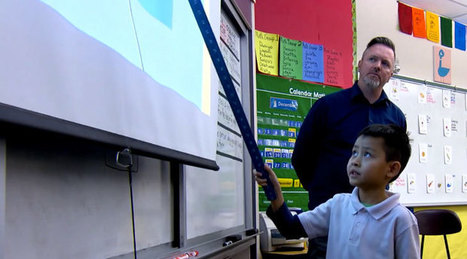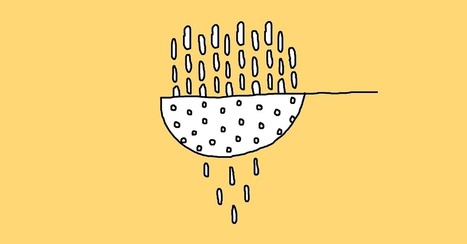You wouldn't use a hammer to try to cut down a tree. Try to use an axe to drive nails and you're likely to lose a finger. Different physical jobs call for different tools. So, too, do different mental jobs.
Optimism and big-picture thinking will help you sell your business idea. Keeping your books in order requires a more detail-oriented approach. Motivating employees requires more empathy than analytical thinking.
Different modes of thinking are best suited for different situations, and according to a new interview with star Wharton professor and best-selling author Adam Grant most of us don't utilize one particularly powerful mindset nearly enough.
Research and publish the best content.
Get Started for FREE
Sign up with Facebook Sign up with X
I don't have a Facebook or a X account
Already have an account: Login
News, reviews, resources for AI, iTech, MakerEd, Coding and more ....
Curated by
John Evans
 Your new post is loading... Your new post is loading...
 Your new post is loading... Your new post is loading...

Dennis Swender's curator insight,
January 15, 2019 3:40 PM
Just like in athletics where players and not coaches are called to demonstrate how a play is executed, student explanations in math help facilitate Vygotsky's zone of proximal development. Subsequently, a instructor's brief and strategically spaced explanations may produce greater attention and comprehension..

Kim Flintoff's comment,
April 23, 2017 8:35 PM
Identified some of this years ago in: http://clt.curtin.edu.au/events/conferences/tlf/tlf2014/refereed/flintoff.html
Sarah's curator insight,
June 4, 2017 8:20 PM
This is a bit of inception with an article on the benefits of curation, curated into a collection on Scoop It. This article discusses the way that curation can enhance higher order thinking by allowing students understand, analyze and evaluate content matter as they curate it. It gives examples of tasks as well as way to present the information. It is a great resource for planning activities to cultivate higher order thinking.

GwynethJones's curator insight,
February 11, 2018 7:47 PM
To Boost Higher-Order Thinking, Try Curation by @cultofpedagogy Super GREAT Post with LOTS of Great ideas! |

Kim Flintoff's comment,
April 23, 2017 8:35 PM
Identified some of this years ago in: http://clt.curtin.edu.au/events/conferences/tlf/tlf2014/refereed/flintoff.html
Sarah's curator insight,
June 4, 2017 8:20 PM
This is a bit of inception with an article on the benefits of curation, curated into a collection on Scoop It. This article discusses the way that curation can enhance higher order thinking by allowing students understand, analyze and evaluate content matter as they curate it. It gives examples of tasks as well as way to present the information. It is a great resource for planning activities to cultivate higher order thinking.

GwynethJones's curator insight,
February 11, 2018 7:47 PM
To Boost Higher-Order Thinking, Try Curation by @cultofpedagogy Super GREAT Post with LOTS of Great ideas! |















